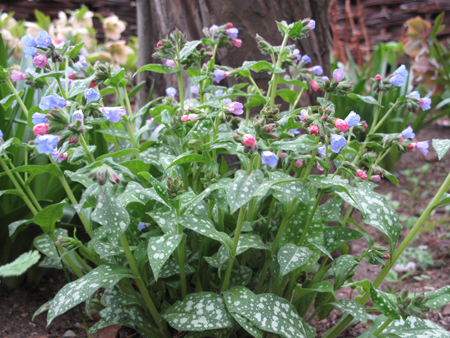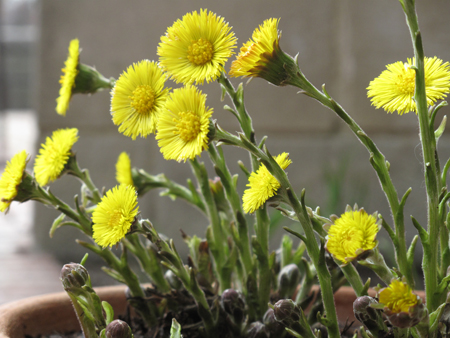Lungwort
Cowslips of Jerusalem, or the true and right Lungwoorte, hath rough, hairie, & large leaves, of a browne greene colour, confusedly spotted with divers spots or droppes of white: amongst which spring up certain stalks, a span long, bearing at the top many fine flowers, growing together like the flowers of cowslips, saving that they be at the first red or purple, and sometimes blewe, and oftentimes of all these colours at once.
???John Gerard, The Herball, or General Historie of Plants, 1597


